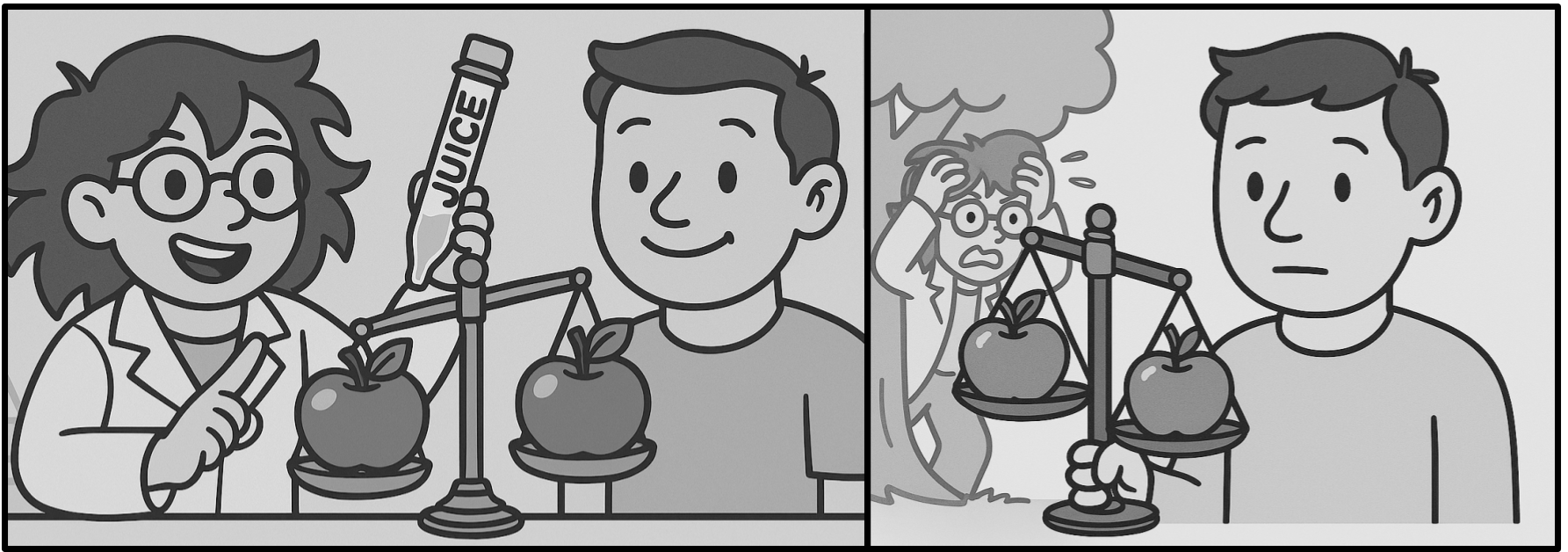Rooted in Choice: The Remarkable Persistence of Idiosyncratic Choice Bias
Published in Neuroscience, Behavioural Sciences & Psychology, and Economics

What Is Idiosyncratic Choice Bias — and Where Might It Come From?
Why do individuals consistently favor one alternative over another, even when the options seem identical? This question has intrigued me throughout my research career.
In our recent study, we turned to a new question: How stable are these biases, and what happens when we try to change them?
The project builds on an earlier study of ours (Lebovich et al., Nature Human Behaviour, 2019), where we first explored the origins of what we called idiosyncratic choice biases — individual-specific tendencies to prefer one alternative over another, even when there is no identifiable reason to do so. These patterns are not easily explained by traditional models of learning, which typically account for decision-making through reinforcement histories or trial-by-trial feedback. In contrast, our modeling work pointed toward a different source: random differences in how neuronal decision-making circuits are wired.
In our earlier work, we developed biologically inspired computational models and showed that even when decision-making networks are constructed according to identical statistical principles, inherent random variations in their structure lead to substantial biases — causing the network to favor one alternative over another, even when the inputs are perfectly symmetrical. That is, a decision-making network might favor one alternative over another — not because of anything in the input, but because of how its internal wiring just happened to turn out. This offered a mechanistic explanation for the emergence of individual choice biases, even in the absence of any external asymmetry.
But other explanations remained plausible. It's well established that feedback can bias decisions: when participants are repeatedly rewarded for favoring one option, their choices tend to shift accordingly. Our earlier experiments included no feedback — by design — yet participants still exhibited substantial biases. However, we couldn’t rule out the possibility that these biases were shaped by reinforcement histories that occurred before the experiment began. Could the biases we measured reflect not random wiring, but rather personal history?
To investigate this possibility, we designed a study asking the following question: How stable are these biases over time, and how do they respond to feedback?
Two Studies, One Question: How Stable and Flexible Are Our Biases?
We ran two longitudinal experiments focused on idiosyncratic choice biases — those person-specific tendencies to prefer one option over another, even when there’s no obvious reason to do so.
Study 1 tested how stable these biases are over time. Participants completed the same perceptual task in two sessions, with no feedback. Remarkably, their choice biases remained highly stable (strongly correlated) — even when the sessions were separated by delays of 8 or 22 months.

Study 2 followed a similar design but added an intermediate session in which participants received feedback after each trial. The first and last sessions, like in Study 1, did not include trial-to-trial feedback.
This feedback was designed to nudge participants toward a specific option. It worked — but only briefly. The feedback effect persisted for one day, but one month later, the effect had halved (we estimate that the influence of feedback would drop to just 1% of its original size by five months). But what happened to the original bias observed before the feedback? Strikingly, it re-emerged more strongly after a longer delay: the pattern of choices one month after feedback was more similar to the pre-feedback bias than the pattern observed just one day after.
These findings suggest that while feedback can temporarily influence the idiosyncratic choice bias, the effect fades — and the original bias re-emerges.

What Makes a Bias Stick?
Our studies challenge the idea that idiosyncratic choice biases like those we observed reflect — or can be durably reshaped by — recent reinforcement.
While we can’t rule out the influence of longer-term learning histories, the single-session feedback in our study had only a temporary effect that quickly faded.
In contrast, the choice biases we observed in the absence of feedback were remarkably stable over time, even when measured months apart. This stability, especially in the absence of ongoing reinforcement, suggests that these biases reflect trait-like properties.
This connects with broader work on behavioral individuality. Among other behavioral characteristics, stable idiosyncratic choice biases have been reported across different tasks and settings, in both humans and nonhuman animals. Notably, even animals from the same genetic line, raised in highly controlled and standardized environments, have been shown to exhibit stable idiosyncratic choice patterns (Buchanan et al., PNAS, 2015).
The long-term stability of idiosyncratic choice biases — and their robustness to feedback — suggests that individuality in choice behavior might arise not just from learning, but from stable differences in how our brains were wired — even before learning kicks in.
Implications: Understand First, Intervene Later
It’s worth keeping in mind that the choice biases we observed aren’t shared across people — they’re idiosyncratic. Some people consistently go for A, others for B — even when the two seem indistinguishable. That heterogeneity presents a challenge — but also an opportunity. And that brings us to a practical takeaway.
If you're trying to predict how someone will decide — whether in an app, a learning environment, or a behavioral study — it may be more effective to measure their existing bias than to try to change it. Measuring comes with little cost and yields stable insights. Changing behavior, especially through feedback, takes effort — and may not last.
For personalized systems, what matters isn’t what most people do, but what this individual tends to do.
Reflecting on My Research Journey
I started investigating idiosyncratic choice biases during my PhD, and this current work came to completion during my time as a guest scientist at the Max Planck Institute of Animal Behavior. The research in these two studies forms a full arc — from developing and evaluating network‑based models of human choice to experimentally testing their implications in real behavior over time.
What I’ve found most striking is how much we can learn from seemingly “innocent” choices — the ones with no correct answer, no external reward, and no clear reason to prefer one alternative over another, yet where people consistently show substantial and persistent biases. These idiosyncratic choice biases are often dismissed as noise. But the modeling work in our earlier study, and the stability and robustness revealed in this one, suggest otherwise: that idiosyncratic choice biases provide a valuable signal about our individuality — something that comes into play even in the most seemingly meaningless choices.
Follow the Topic
-
Communications Psychology

An open-access journal from Nature Portfolio publishing high-quality research, reviews and commentary. The scope of the journal includes all of the psychological sciences.
Related Collections
With Collections, you can get published faster and increase your visibility.
Replication and generalization
Publishing Model: Open Access
Deadline: Dec 31, 2025
Intensive Longitudinal Designs in Psychology
Publishing Model: Open Access
Deadline: Mar 31, 2026





Please sign in or register for FREE
If you are a registered user on Research Communities by Springer Nature, please sign in